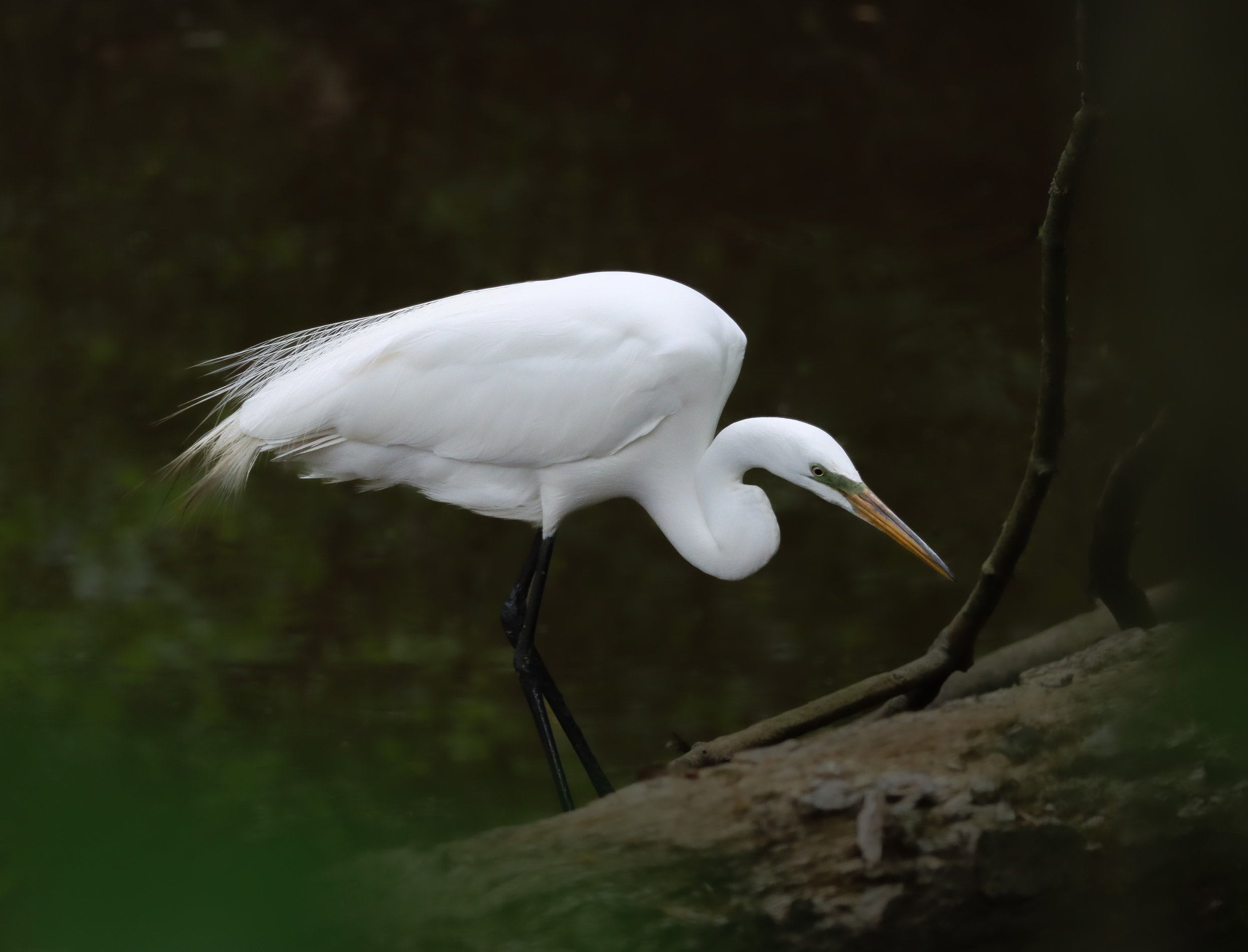Bombay Hook National Wildlife Refuge
Bombay Hook National Wildlife Refuge is considered one of the best places to bird on the east coast for very good reasons. The refuge, located in Smyrna along eight miles of the Delaware Coast, protects one of the largest remaining expansive tidal marshes along the Atlantic Flyway. The stunning expanse of 15,978-acres serves as a vital stop over and breeding ground and has become increasing important for birds, especially as other habitats have been lost. As a result of its location and contiguous protected acreage, the refuge welcomes an incredible 327 species throughout the year and provides for outstanding photo opportunities of ducks, shorebirds, songbirds, warblers, and birds of prey.
Blue Grosbeak
The Habitat: The refuge area within the Delaware Bay is one of the largest staging areas for migratory shorebirds in North America. Bombay Hook is also a key point for waterfowl that stop over before heading south or spend the winter before returning north. Due to the habitat of the refuge, which is primarily tidal salt marsh, including cordgrass meadows, mud flats, tidal pools, rivers, creeks, and tidal streams, this habitat is ideal for shorebirds, wading birds, waterfowl, and even birds of prey. There is also upland habitat with forests, freshwater impoundments, swamps, and fields of herbaceous plants attracting a range of songbirds, warblers, as well as white- tailed deer, beaver, muskrat, red fox, river otter, woodchuck, and opossum.
Wildlife Drive: I admit that I am a huge fan of wildlife refuges with auto routes and Bombay Hook has a great auto road. Driving the refuge allows you to cover many miles, stop and set up heavier equipment, drive multiple loops as the sun direction and weather shift throughout the day, and even photograph from the car window (or sunroof!). Bombay Hook’s 12-mile loop travels past all the key viewing areas, including Raymond Pool, Shearness Pool, and Bear Swamp Pool. On this route we have seen more birds that I can list and in numbers that I have rarely seen elsewhere. Some of the most amazing viewings (on separate days and at different times of year) have included a group of about 30 Bald Eagles, hundreds of American Avocets feeding at low tide, flocks of Black-neck Stilts, hundreds and hundreds of Dunlins grouped on Raymond Pond, and more Canada Geese than I have seen collectively anywhere else. We have also seen some truly amazing birds including American Golden Plovers, Hudsonian Godwits, and Blue Grosbeaks eating seeds from the grass growing along the road.
Great Egret
Hiking trails and boardwalks: When you are ready to hop out of the car, there are five trails within the refuge, all very short and easy. Three of the trails lead to Observation Towers: Raymond Observation Tower Trail, Shearness Observation Trail, and Bear Swamp Trail. These towers provide expansive views across the pools and refuge. There is also the Boardwalk Trail and Parson’s Point Trail.
Bird Photography: Wildlife drive provides the best spots for bird photography at Bombay Hook. Give yourself plenty of time, at least 2-3 hours, but preferably a day, to explore. Bring your binoculars or spotting scope, a zoom lens, and a steady tripod. You may see Bald Eagles perched in trees, Northern Harriers flying across the marshes, shorebirds foraging in the mudflats, ducks and waterfowl scattered across the waters, and herons and egrets at the edges or grouped in trees. Be ready for all types of bird photography opportunities! As always, early mornings or late afternoons are the most ideal times for photography, but you will see birds at any time of day. Low tide is a great time to see the shore birds and wading birds foraging.
American Avocet
When to go: It depends on your interests, but I highly recommend going to Bombay Hook during spring and fall migration when the sheer number of birds flying through is awe-inspiring – but any time of year will yield amazing photography opportunities. Shorebirds are at their peak in May, drawn to the horseshoe crab eggs and invertebrates in the tidal marshes and mudflats. Warblers are also at their peak in May. Wading bird populations peak in the summer and waterfowl populations peak in November and December, with more than 150,000 ducks and geese use the refuge during these winter months!
What to Know: The refuge is open from ½ before sunrise to a ½ after sunset (perfect for photography). There is a visitor’s center that is open weekdays year-round and on spring and fall weekends. The visitor center is closed on weekends during July, August, mid-December, January, and February and on federal holidays. Check the website for exact times and closures. There is a small fee per car, per day.
For more information and directions: https://www.fws.gov/refuge/bombay-hook
Bald Eagles





